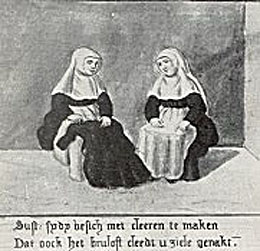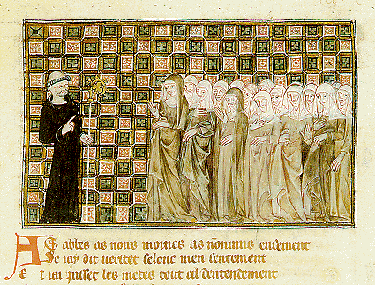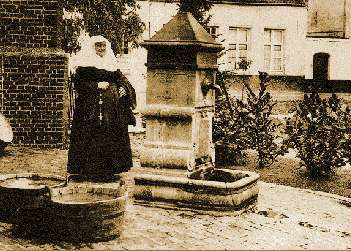
The actual history of the Beguinage starts in the 12th century. For Europe, this was an era of economical, cultural and religious revival. In this society, finding enough food was no longer the only and central question: people had more fundamental questions and were trying to find meaning in their lives. This climate gave rise to a broad mystical movement in Europe.
A beguinage was no nunnery. Beguines did not make perpetual vows of chastity, poverty and obedience, as classical monks and nuns did. Their promises were only temporal and poverty was not obligatory: A beguine had her own possessions and her own income. She promised celibacy and obedience for only as long as she remained in the beguinage. She was free to leave the convent at any time.
In Leuven, (my hometown since 1972) all women who had spent ten years or more in the convent elected their mistresses democratically. Usually three or four of them managed the daily affairs together. This system continued in the following centuries, but the role of the priest (called the primarius) in management became more important later.

The formation of large beguine convents was a typical phenomenon in the Low Countries; it was in Belgium that the beguinage developed. The oldest document mentions the Beguinage of Leuven in 1232. In 1963 this beguinage was bought by the Catholic University of Leuven. At that time the last beguine was living there.

Want to learn more? Here are some links:
“The Beguines,” by Elizabeth T. Knuth
Bruges: The Begune’s House Museum
Groot begijnhof Leuven, a brief history
Hoogstraten Restoration Project
| Back | Next |